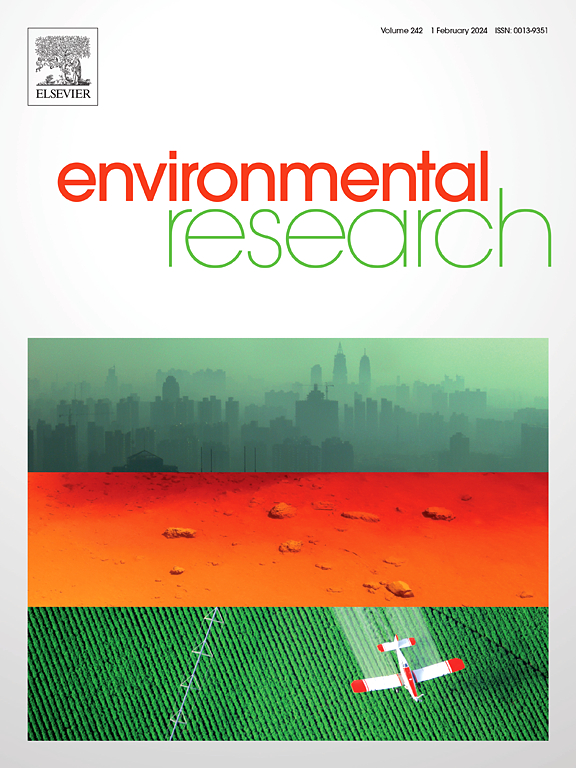Optimizing localized polarons on Co3O4 surface for photo-ozone catalysis
IF 7.7
2区 环境科学与生态学
Q1 ENVIRONMENTAL SCIENCES
引用次数: 0
Abstract
Photothermal conversion-induced increase in temperature enhances the recombination of charge carriers, thereby limiting solar energy utilization for catalysis. Herein, we developed a freeze-straw-capillary-action method for synthesizing N-doped Co3O4 (Co3O4-FC) to enhance the photo-induced nonthermal effect on the catalytic ozonation of dichloromethane (DCM). The N doped in Co3O4-FC generated localized polarons under light irradiation through d-d transitions. The polarons remained stable over the test temperature range (25–70 °C) and converted some surface Co2+ sites to Co3+ sites. Co3+ ions were formed under light irradiation and served as adsorption and activation sites for DCM. Given this unique property, Co3O4-FC exhibited a strong synergistic effect between photothermal and photocarrier processes. At 70 °C, illumination increased the RDCM, mineralization efficiency, and ozone utilization of Co3O4-FC by 37.8 %, 163.6 %, and 73.7 %, respectively, whereas the those of Co3O4-blank presented no significantly change under illumination. To our knowledge, the photo-induced nonthermal effect observed in this work has not been previously reported. This newly identified pathway has the potential to lower the temperatures required for thermocatalysis or to alter reaction selectivity via light irradiation.

优化Co3O4表面定域极化子的光臭氧催化作用。
光热转换引起的温度升高增强了载流子的重组,从而限制了太阳能用于催化的利用。为了提高二氯甲烷(DCM)催化臭氧化的光诱导非热效应,我们开发了一种冷冻吸管-毛细管作用法合成n掺杂Co3O4 (Co3O4- fc)。掺杂在Co3O4-FC中的N在光照射下通过d-d跃迁产生局域极化子。极化子在测试温度范围(25 ~ 70℃)内保持稳定,并将一些表面Co2+位转化为Co3+位。光照射下形成Co3+离子,作为DCM的吸附和活化位点。鉴于这种独特的性质,Co3O4-FC在光热和光载流子工艺之间表现出很强的协同效应。70°C光照使Co3O4-FC的RDCM、矿化效率和臭氧利用率分别提高了37.8%、163.6%和73.7%,而Co3O4-blank的RDCM、矿化效率和臭氧利用率在光照条件下无显著变化。据我们所知,在这项工作中观察到的光诱导非热效应以前没有报道过。这一新发现的途径有可能降低热催化所需的温度或通过光照射改变反应选择性。
本文章由计算机程序翻译,如有差异,请以英文原文为准。
求助全文
约1分钟内获得全文
求助全文
来源期刊

Environmental Research
环境科学-公共卫生、环境卫生与职业卫生
CiteScore
12.60
自引率
8.40%
发文量
2480
审稿时长
4.7 months
期刊介绍:
The Environmental Research journal presents a broad range of interdisciplinary research, focused on addressing worldwide environmental concerns and featuring innovative findings. Our publication strives to explore relevant anthropogenic issues across various environmental sectors, showcasing practical applications in real-life settings.
 求助内容:
求助内容: 应助结果提醒方式:
应助结果提醒方式:


